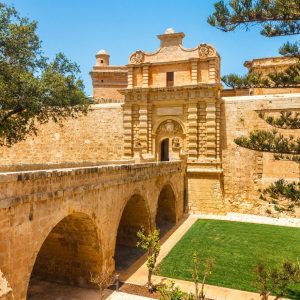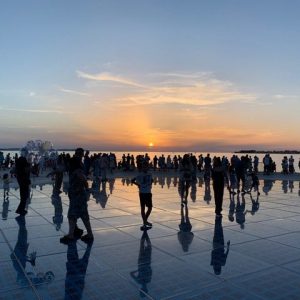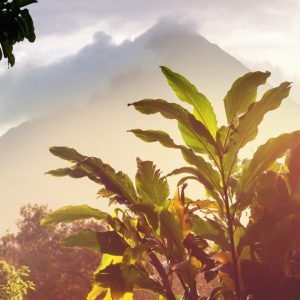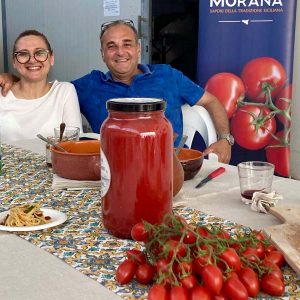It is hugely popular for group tours but is a self drive holiday in Costa Rica a viable alternative? Along with her husband Peter, Cathy Bartrop hit the road to find out…
Years of rural East Sussex living has given us plenty of driving experience on narrow and winding country roads, occasional flooding and never-ending pothole dramas. Nevertheless, driving in Central America sounded potentially challenging and we approached our Costa Rica road trip adventure with a healthy dose of trepidation.
Costa Rica is a relatively small country, roughly the same size as Switzerland. It has two, very different coast lines on the Caribbean and Pacific sides, some pretty high mountains and diverse terrain in between including volcanoes and the lush, tropical rainforests for which it is globally renowned. Unless you’ve got a few months to spare, it would be a challenge to do it all justice in one trip.
Our road trip was designed around properties in the Small Distinctive Hotel group, a collective of independently-owned 4 and 5 star hotels. As it happens, they currently don’t have any properties on the Caribbean coast so our decision was easy. We focused on the North West and the beaches along the Pacific Coast.
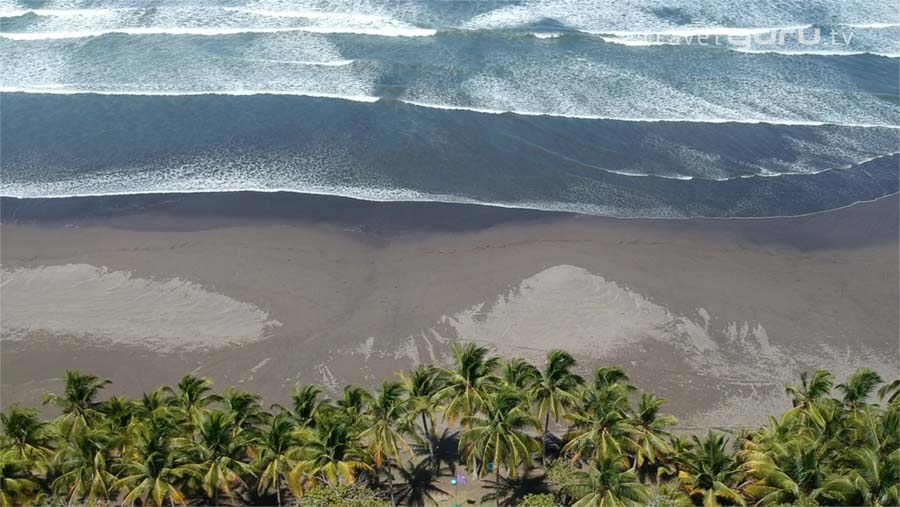
San Jose is an urban sprawl in the Central Valley and, after a few days acclimatising in the city and exploring on foot, we were craving that renowned Costa Rican tropical scenery. Having picked up our Adobe Rentacar at their downtown office, driving out of the busy city was remarkably straightforward. We had already clocked the deep ditches either side of most roads (presumably there to cope with heavy rainfall) but, keeping well clear of those, the roads seemed well maintained, well marked and despite their Latin temperament, city drivers surprisingly tolerant of tourists in hire cars.
We were heading to La Fortuna, a straight 2.30 hour drive west. We’d opted for a portable wifi hotspot device with the car so we were able to use our phone Waze app for directions and also have free wifi away from the car. As we approached this particular destination though the SatNav was superfluous, we just kept heading towards the volcano! Arenal Volcano in fact, a perfectly formed, now dormant stratovolcano rising a majestic 1633 metres over the surrounding National Park and most definitely the jewel in La Fortuna’s crown. From anywhere in our resort, the Arenal Kiora, we could observe the volcano in all its glory – quite the view! In the space of 24 hours we watched it go from a complete white out to a clear view of the peak with all shades of hovering clouds in between.
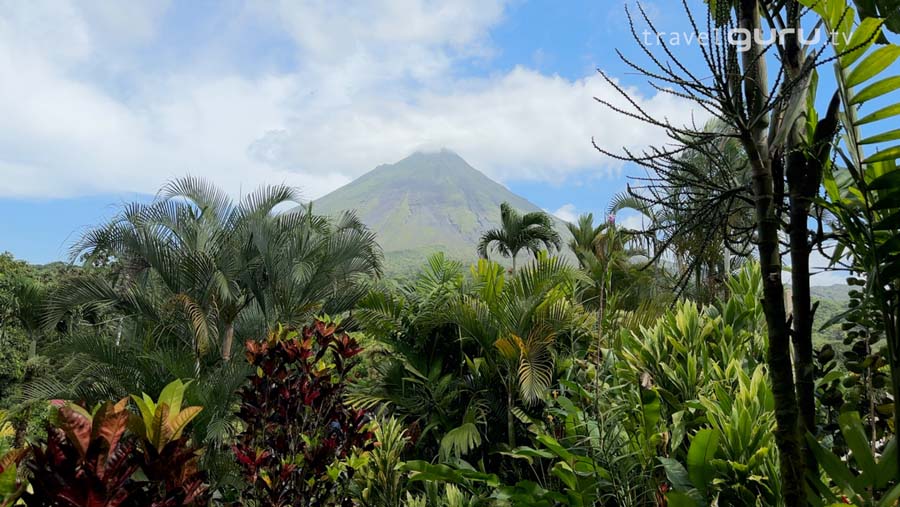
Nearby La Fortuna is known as Costa Rica’s adventure hub. From luxuriating in natural thermal pools to zip lining, horse riding, white water rafting, quad biking, you name it, you can find it here. All great fun though, it should be noted, all come with a hefty price tag. As we were quickly realising, Costa Rica is most definitely not a cheap destination. Expect to pay around $100 per person per adventure activity. Luckily our hotel had its own (free) thermal pools and, because we knew we had some of these activities lined up in other places, we decided to focus on the Arenal National Park where there are multiple, self guided hiking trails. A decision that paid off when, within 10 minutes of starting out, we got our first close up of an active sloth. Active as in eating and not napping as they do 80% of the time. There he was busily chomping on leaves only a few metres up in a tree just off the trail, seemingly oblivious to the adoring crowd gathering below.
Our next leg of the trip took us north of Liberia to another, this time active, volcano in the Rincon de la Vieja National Park. Borinquen Thermal Resort lies just on the edge of the park and, once off the main road, getting there involves a seriously bumpy and dusty ride up a few miles of narrow road, partial tarmac but mostly rocky, potholed track.
We had been told that a 4×4 was the best vehicle choice and it certainly proved its worth here, I don’t know that we would have managed it without one. Still, its all part of the adventure and the remote location was definitely worth the drive – any stress melted away as we settled in for a couple of nights in this rural idyll. Accommodation is in individual villas set on a wooded hillside, surrounded by nature with the soothing sound track of exotic birds – over 250 species of them. If you need a further nudge to get those shoulders to drop there are more thermals pools to soak in this time with bonus hot mud bath action, a seriously good spa and a huge free form swimming pool. There’s high adrenaline action too. A spectacular guided horse ride in the National Park gave us a sense of the dramatic scale of the surroundings, swiftly followed by a white knuckle zip line adventure back down to the resort. Borinquen boasts one of highest and longest zip lines in the country with 15 platforms and 12 sections, each flying you above and, at times, through the tree canopy. Zipping past waterfalls and literally flying alongside toucans and parakeets – the whole sweaty palm experience was completely thrilling.
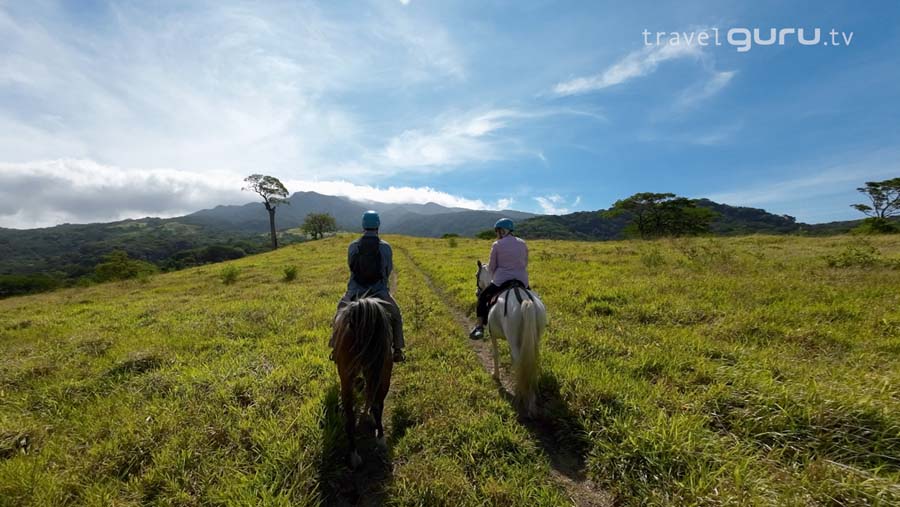
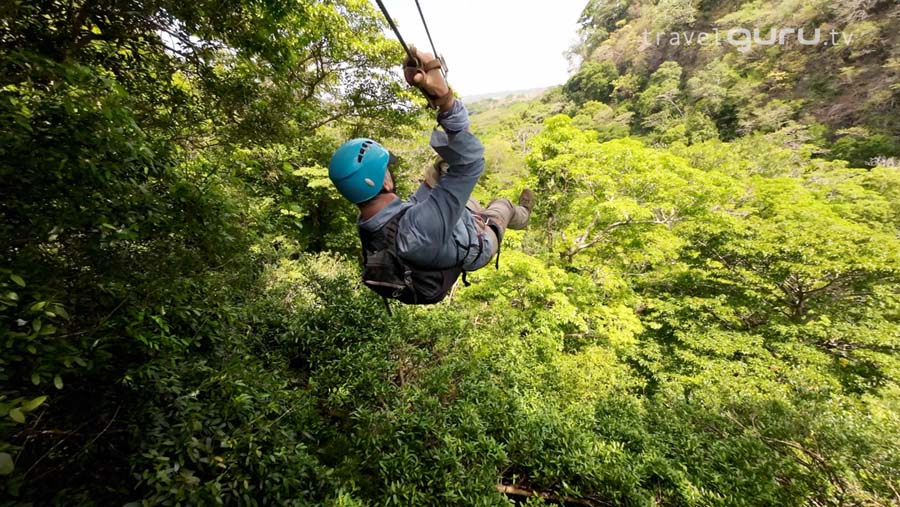
We were sad to leave Borinquen but the coast was calling. By now we were half way through the road trip and feeling good about the driving. For the most part, the going is easy but its worth noting, the vast majority of roads are single lane and, generally, there are very few alternative routes. We were travelling in May, low season and known locally as Green i.e. wet season but we got lucky and, thus far, had barely seen a drop of rain. Heavy rain would certainly have a big impact on road conditions, particularly on the smaller rural roads and tracks, where loose surface can simply be washed away and landslides block roads.
When you are planning your journey, the number of kilometres is almost irrelevant, check Google maps for the estimate of time. Sometimes it seems extraordinarily long for the distance but invariably is a better guide. Sometimes you get lucky but as the main roads are mainly single lane, you can easily get stuck behind slow vehicles and, should there be any roadworks or accidents, there is little option but to sit and wait. Off the main roads, the conditions are something of a lottery. We had no problems with navigation or filling up with petrol. There are plenty of petrol stations and we loved that the price is government controlled so you never feel ripped off. When we were there, the price per litre was around 20% lower than the UK and, as an added bonus, petrol pumps are always manned by two people, one to fill and one to take your money.
The worst drive we encountered was on our route to the Pacific Coast. Driving down to Nicoya was a breeze but, once we came off the main road, the last 25 kms took well over an hour as we were forced to slow down to a crawl on crazy, potholed cratered roads. The trick is to try and tag behind local drivers who, as is obvious by the way they swerve left to right, seem know every single pothole and crater. To avoid tyre damage, the going is, of necessity, slow, nerve racking and requires serious concentration.
Happily, no matter which road you are on, you can always take a break at a ‘Soda’, the Costa Rican term for roadside food stalls or cafes. They are usually family run, with a menu limited to a few local favourites. Even on this seemingly unloved road there were loads of options. We were tempted by a thatched road side shack – curiosity led to a pit stop and the delightful discovery of Caldosas. Ceviche is a dish on virtually every restaurant menu but it becomes ‘Caldosas’ when its served ladled into a bag of tortilla chips which you use as your scoop for the fish – sounds weird but, trust me, its delicious and a genius way to save on the washing up!
Perked up by our snack, after another half hour bumpy drive we finally reached the surfing mecca of Nosara where the road conditions suddenly took a turn for the better as a rash of very upmarket looking houses, villas and hotels started to appear. Upscale surf and yoga resorts are slowly but surely turning this stretch of coast into a playground for the cool, predominantly American, crowd. We later found out that few US tourists take the drive we had done, most fly in to Tamarindo domestic airport which is 40 kms away on the other side of town and connected by a recently tarmacced road.
At the Gilded Iguana where we stayed, the accommodation and the facilities were outstanding as was the food, designed to appeal to the health conscious guests. As well as a huge gym, yoga studio and off road bike rentals, the hotel has its very own Surf Club, a few minutes walk away right on the magnificent Playa Guiones. Pete was thrilled to find that a surf lesson in the bath like temperature of the Pacific Ocean is infinitely more enjoyable than his 40 year old memories of the same in Cornwall.
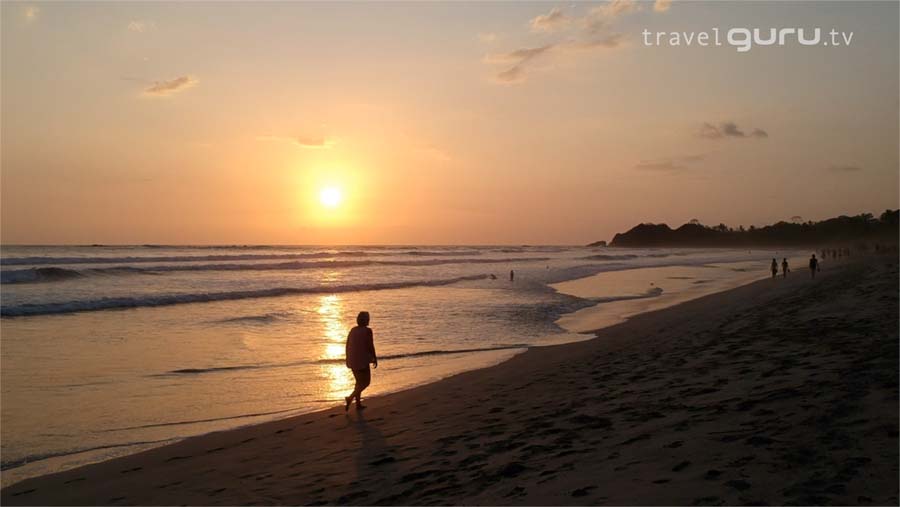
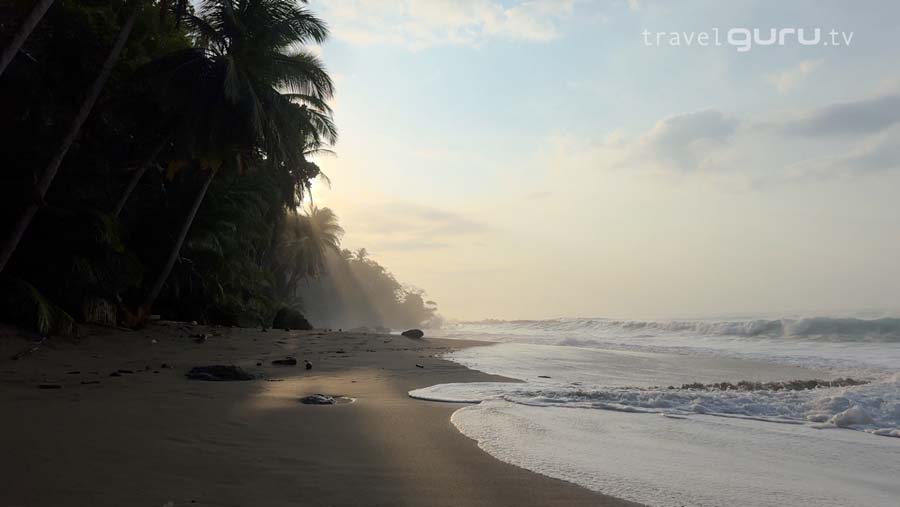
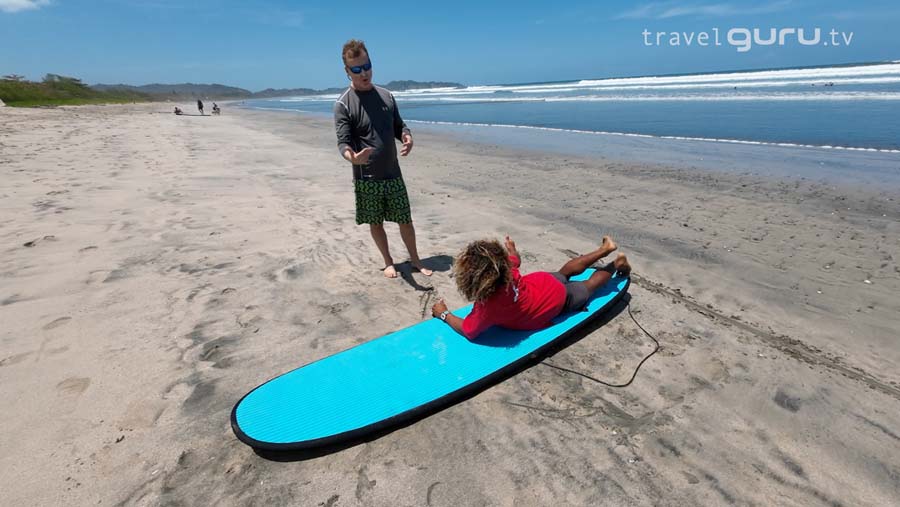
As we headed further around the Pacific coast the road conditions improved somewhat. We hopped from one beach resort to the next, each time passing through varied, and often dramatic, coastal landscapes. Beaches on this coastline come in all shapes, sizes and, with volcanic sand, colours. The golden sand of Tango Mar Beach & Golf resort, a private estate tucked away on the west of the Nicoya Peninsula was a real gem. All beaches in Costa Rica are public but it felt like we had this one virtually to ourselves. It was way too hot for golf when we were there, but cycling or horse riding through the beach side forests was fun as were dawn and sunset walks on the beach and cooling off in the triple tier of beachside swimming pools.
Many people head to this beautiful peninsula directly from San Jose, cutting down on drive time by taking the Tambor car ferry across the gulf from Puntarenas to Paquera. We did the same, but in reverse. Once docked in Puntarenas we then followed the Central Pacific coastline around to Tarcoles, crossing the river of the same name where you can hang out on the bridge to watch the enormous crocodiles, sunbathing in the shallows below. Our home for the next two nights was Villa Caletas just beyond the Carara National Park. Every hotel in the Small Distinctive Hotel group is unique and arguably none more so than Villa Caletas. Built in the 1990s on an abandoned and deforested site of 700 acres, it is the brainchild of flamboyant French designer Denis Roy. Having reforested the entire site, the hotel complex was then developed on the hilltop taking full advantage of the 360 panorama of the tree canopy, alive with monkeys and birds. Villa Caletas and the newer addition of the Zephyr Palace are renowned for this remarkable location as well as their unapologetic, maximillist styling, popular for weddings, honeymooners and instragrammers. Not really our style but, to have breakfast on the restaurant terrace watching groups of scarlet macaws in the trees just metres away was an unforgettable experience.
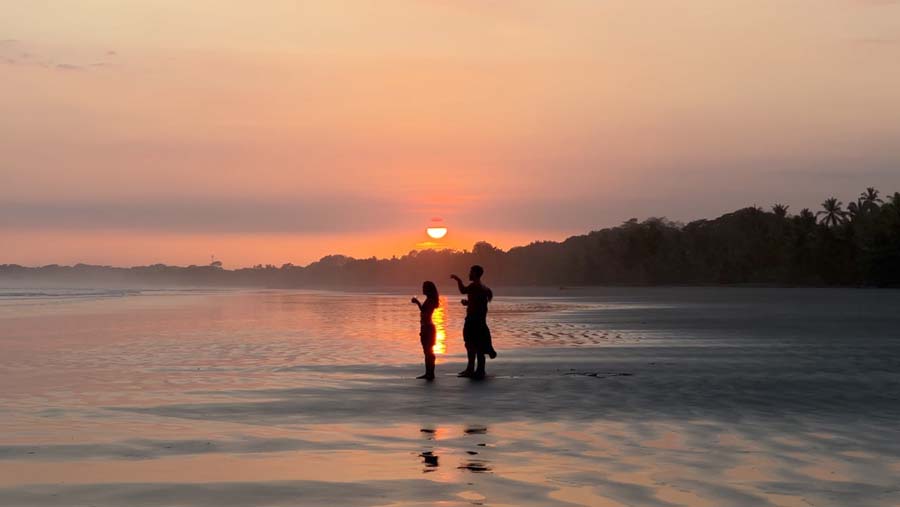
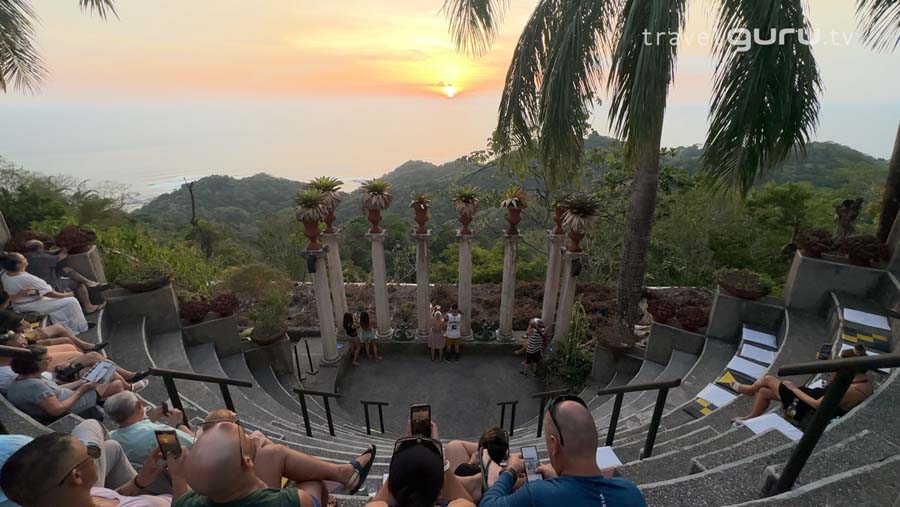
Our final beach stay was a under an hour’s drive further along the coast and, on this trip of contrasts and surprises, Alma del Pacifico on Esterillos beach was the perfect way to end. To say it is a ‘colourful’ beachside resort would be an understatement – it is more a riotous kaleidoscope both in the amazing tropical gardens and the individual beachside bungalow exteriors and interiors.
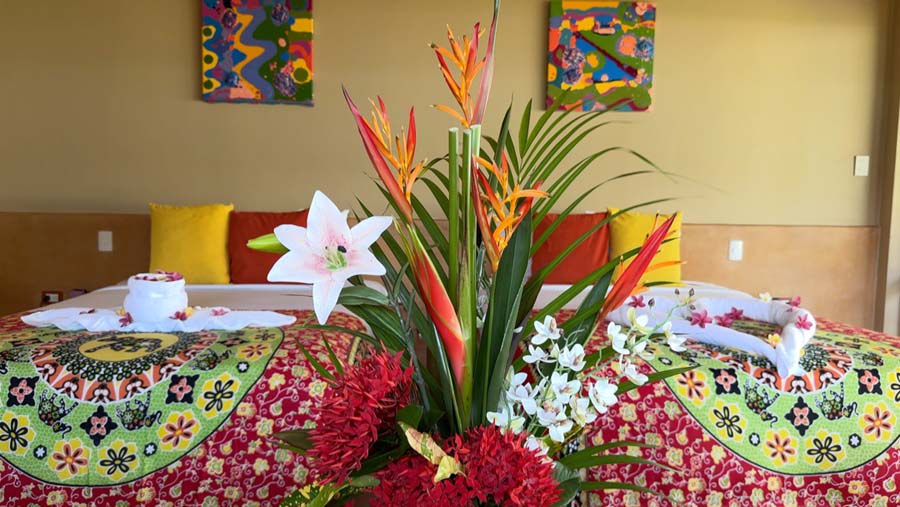
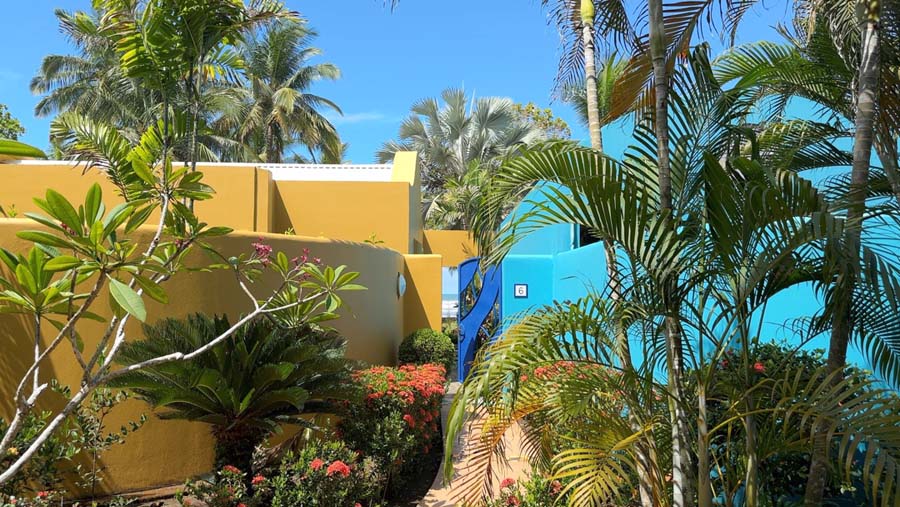
Set against blue skies, miles of soft white sand and the crashing waves of the Pacific Ocean, its guaranteed to make you smile. There’s a lively, fun atmosphere in this resort with sloths hanging out in the trees to boot – we saw three, though they were always asleep! As well as a Spa, a large pool in the gardens, open air restaurant and a beach bar, the star of the show has to be the magnificent beach. Every walk offered new finds and endless fascination – from the drama of sunsets to shelling and finding dozens of sand dollars to watching the birds and hermit crabs go about their business.
The resort is also well placed for exploring Costa Rica’s smallest but best known national park, Manuel Antonio. The park cover 3 square miles and is popular because of its manageable size and also because, as well as the tropical forests, it boasts four beautiful white sand beaches so you can easily make a day of it. You can just pay the entrance fee and explore on your own but this is one park where I would say its absolutely essential to pay for a guide. The park was established in 1972 as the result of local protesters seeking to protect the environment and conserve wildlife from developers. There is no going ‘off piste’, you are confined to designated walkways and trails. Its popularity means that these can get very crowded so, naturally, the wildlife stay at a distance or high up in the trees – the only way to see them is really through the strong telescopic lens that identifies the guides. Not quite as thrilling as close up encounters but that said, the guides are excellent spotters and we did see a much wider variety of birds, frogs and sloths than we had on our own hikes.
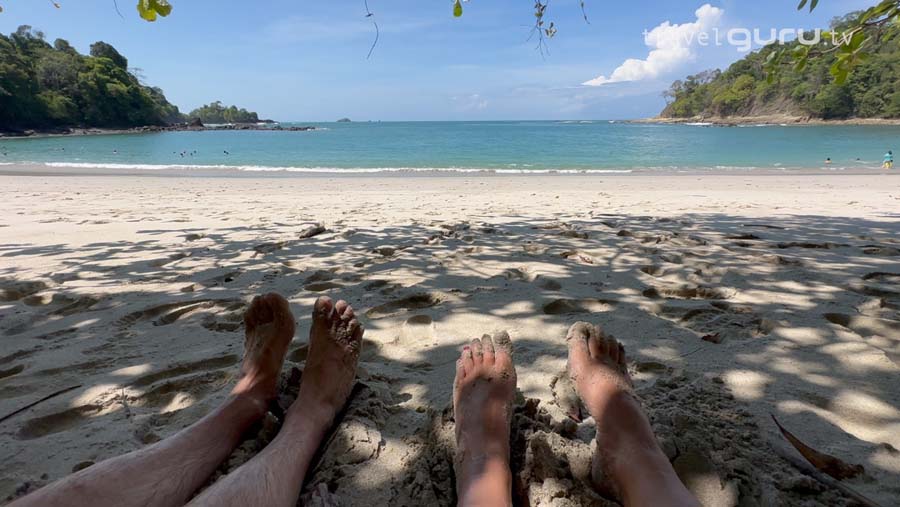
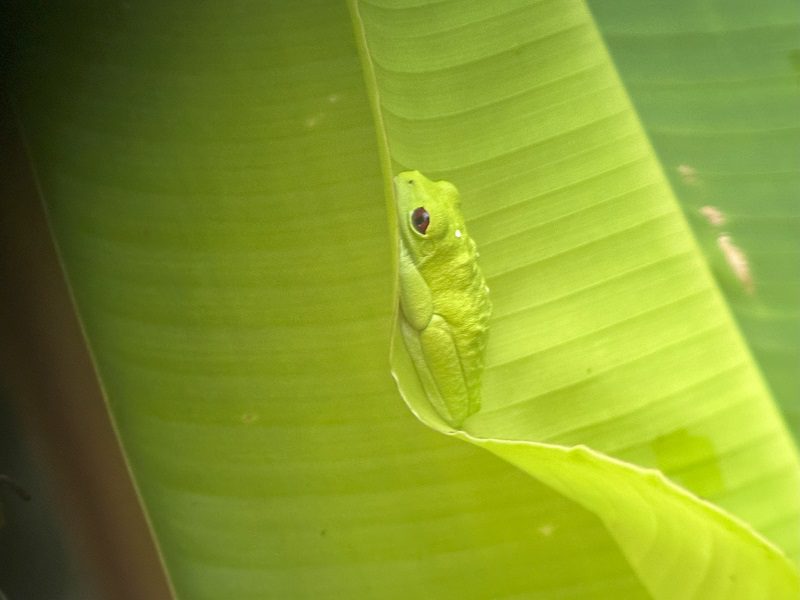
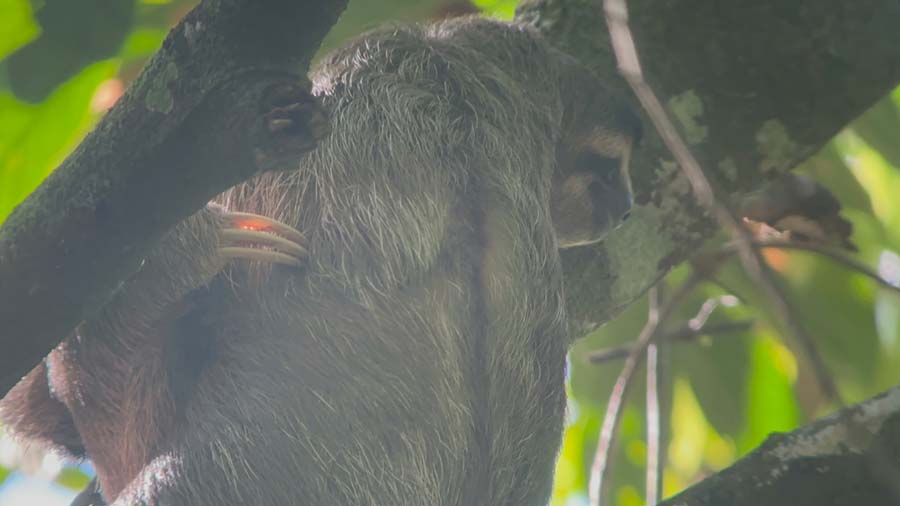
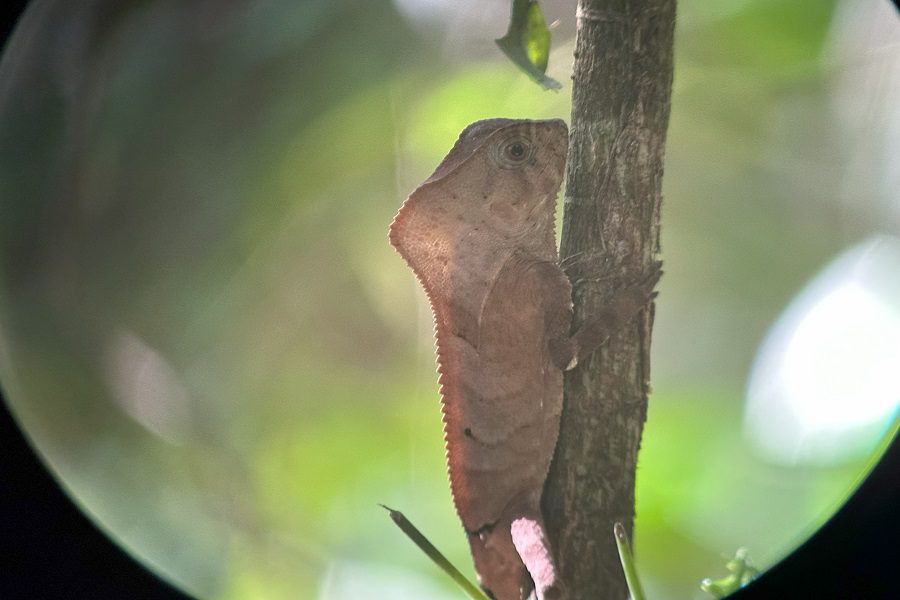
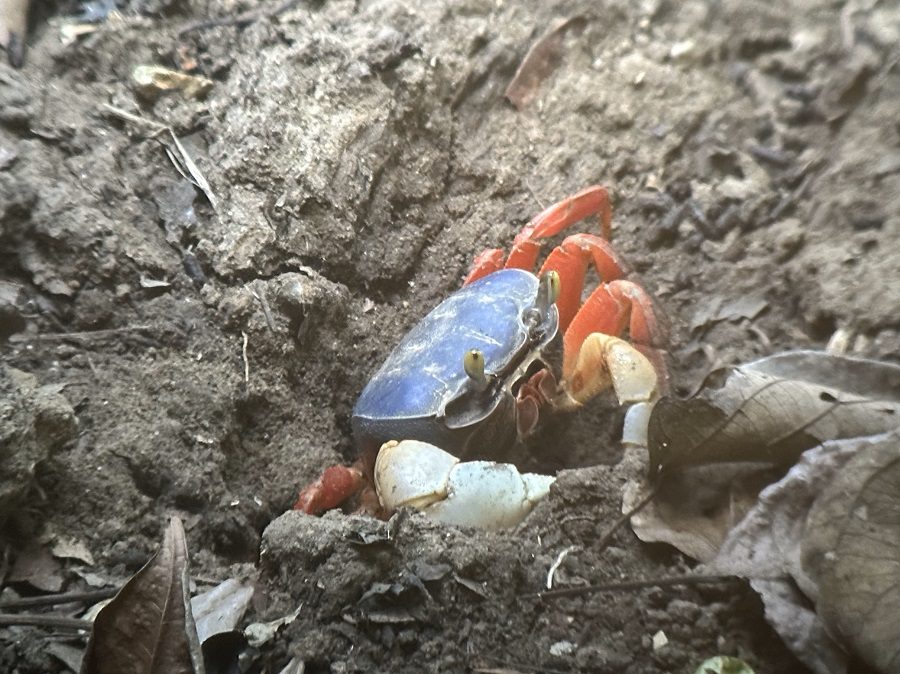
Completing the road trip, for our final leg we decided to squeeze in one more National Park, driving back to San Jose via Route 2 through the Los Quetzales National Park. A long but spectacular drive that took us high up into cloud forests. Another slow drive challenge but well worth it for the experience and simply stunning scenery.
As we finally descended back down to San Jose, our weather luck finally broke. The heavens opened and we got our first taste of a proper tropical downpour. City traffic slowed to a painful crawl. Inching towards the Adobe car rental office by the airport to drop off the car, rain pounding the roof, we reflected on what had been a truly amazing trip. 14 days, 1400 kms, six hotels, multiple national parks, incredible animals and birdlife, fabulous beaches, a friendly welcome pretty much everywhere and, most important of all, no road trip dramas! Maybe we had got off lightly because of the, unexpectedly, dry weather but our overwhelming conclusion was that, our initial fears had been unfounded, road trips around Costa Rica are not just possible, but most definitely a great choice.
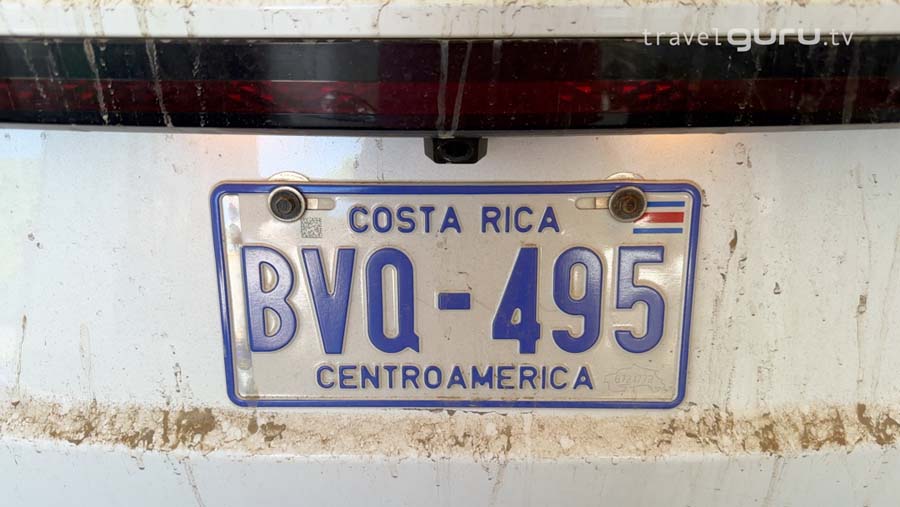
Factbox
- Costa Rica has 30 National Parks – click here for more information
- Cathy and Peter flew to San Jose via Miami with British Airways and stayed as guests of the Small Distinctive Hotel group, for full hotel details visit www.distinctivehotels.com. Adobe Rentacar have 14 rental locations across Costa Rica making it possible to match car rental with domestic flights to cut down on driving time. For details visit adobecar.com.
Our Silver Travel Advisors have a great selection of escorted tours available in Costa Rica and Central America if you would prefer to be guided. Call 0800 412 5678.

